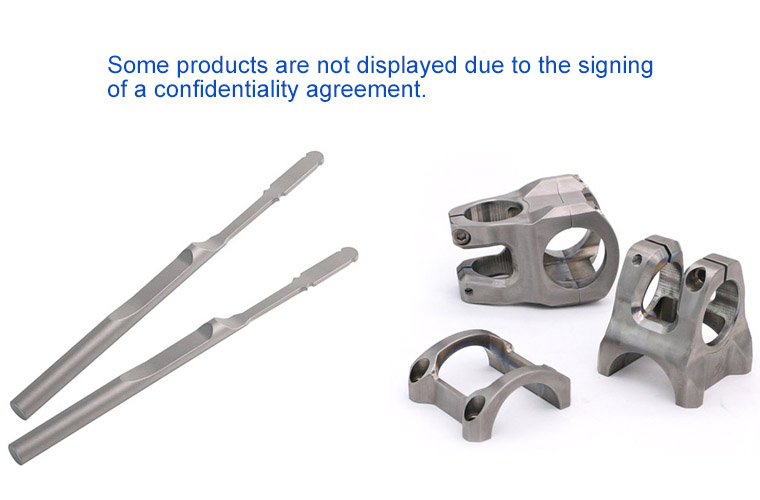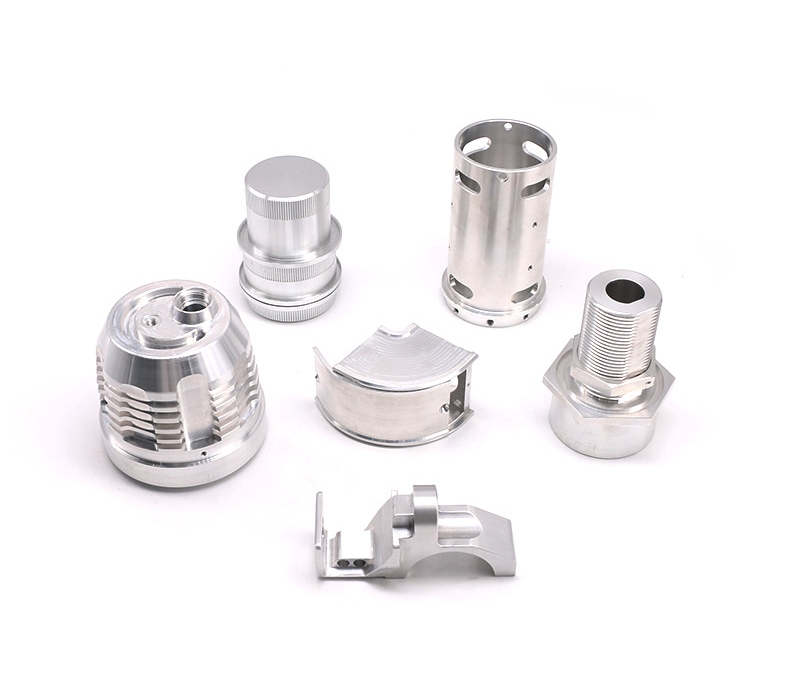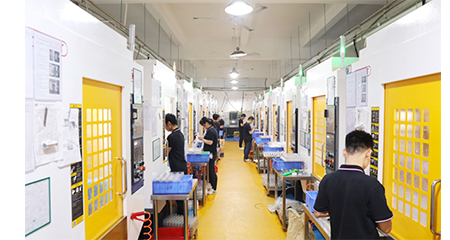The Cost of Titanium Per Pound: A Guide for Exploration
Because of its exceptional strength, light weight, and corrosion resistance, titanium is a preferred material in CNC machining. For buyers and industry professionals, understanding the cost of titanium per pound is essential when planning projects or evaluating suppliers.
Titanium prices vary significantly depending on grade, market conditions, and end-use requirements. On the low end, scrap titanium may sell for around $3 per pound, while high-grade alloys can command prices of $15 per pound or more.
Read on for a detailed exploration. Explore the nuances behind titanium prices and how they affect industries worldwide.
What is Titanium?
Titanium is a lightweight, strong, and corrosion-resistant metal used in various high-demand industries like aerospace, medical, and automotive. The titanium price per pound fluctuates based on factors like demand, grade, and market conditions. Understanding its cost is essential for buyers and professionals to make informed decisions.

Understanding Titanium Prices in Today’s Market
Titanium’s cost per pound is influenced by several key factors, making it essential to understand the dynamics behind its pricing. The price can vary significantly based on its grade, the supply and demand in the market, and its specific applications. Titanium is used in a wide array of industries, from aerospace to medical devices, which can all affect its price. For instance, high-performance titanium alloys, such as Ti-6Al-4V, which are commonly used in aerospace and military applications, are much more expensive than commercially pure titanium or titanium scrap.
How Much Does Titanium Cost Per Pound?
The cost of titanium per pound can vary significantly depending on several factors such as the grade, purity, and the specific use of the material. Here’s a breakdown of the typical price ranges for various types of titanium:
Commercially Pure Titanium (Grade 1 and 2):
Price Range: $6–$9 per pound
Commercially pure titanium, such as Grade 1 and Grade 2, is generally the least expensive type of titanium. It is used in applications that don’t require high strength, such as in chemical processing, heat exchangers, and certain architectural uses. The lower cost is due to the absence of alloying elements and its lower strength compared to other titanium alloys.

Titanium 6-4 Alloy (Grade 5):
Price Range: $10–$15 per pound
Titanium 6-4 (Grade 5) is one of the most commonly used titanium alloys because of its high strength, corrosion resistance, and biocompatibility. It is often used in aerospace, medical implants, and military applications where high-performance materials are necessary. Due to its advanced properties and the complex manufacturing processes involved, this grade of titanium comes at a premium price.
Titanium Scrap:
Price Range: $2–$4 per pound
Titanium scrap consists of material that has been reclaimed from manufacturing processes. The price of titanium scrap is typically lower than that of new titanium but still holds value based on its purity and quality. Scrap titanium can be refined and reused, offering a cost-effective solution for less demanding applications. Its price fluctuates based on market conditions and the costs of refining.
Titanium Sheets:
Price Range: $15–$30 per pound
Titanium sheets are used in various industries, including aerospace, medical, and automotive, to create flat parts or to be further processed into complex components. The cost of titanium sheets is higher than that of other forms, as the additional processing costs—including rolling, cutting, and finishing—add to the overall price of the material.
Price Variations Between Titanium 6-4 and Other Grades
Titanium 6-4 is typically more expensive than other titanium grades, primarily because it offers superior mechanical properties such as high strength, corrosion resistance, and biocompatibility. These qualities make it indispensable in industries where performance is crucial, such as in aerospace and medical applications. Due to its enhanced properties, the price of titanium per lb for Titanium 6-4 tends to be higher, typically ranging between $10 and $15 per pound.
In comparison, Titanium Grade 2, which has lower strength and is used in less demanding applications, costs around $6 to $9 per pound. This makes it a more affordable option for industries where strength and corrosion resistance are important but not as critical as in high-performance sectors. Grade 2 is commonly used in applications such as marine environments, chemical processing, and certain architectural projects.
Note: The cost is for reference only. The price per pound of titanium is affected by many factors.
What Are the Key Factors Influencing Titanium Prices?
Several factors contribute to the fluctuations in the cost of titanium per pound, including its extraction, global demand, technological innovations, and market trends. Below are the key factors that directly impact the current price of titanium:
| Factor | Description |
|---|---|
| 1. Mining and Refinement Costs | Titanium is extracted from minerals like ilmenite and rutile through energy-intensive and costly processes involving high temperatures and specialized equipment. As easily accessible sources deplete, costs rise, impacting the titanium cost per pound. |
| 2. Geopolitical Issues | Political tensions, trade restrictions, tariffs, and supply chain disruptions (e.g., strikes, export bans) from key producing countries can restrict supply and lead to sudden price spikes. |
| 3. Supply and Demand | High demand in sectors such as aerospace, automotive, and medical devices increases pressure on supply, raising titanium prices globally. |
| 4. Grade and Purity | Prices vary by type: commercially pure titanium ranges from $6–$9/lb, while stronger alloys like Titanium 6-4 range from $10–$15/lb due to enhanced strength and corrosion resistance. |
| 5. Recycling Impact | Increased use of recycled titanium lowers the demand for virgin material, reducing overall costs. Scrap titanium is cheaper and often used in non-structural applications, helping stabilize prices. |
| 6. Technological Advancements | Technologies like 3D printing and modern recycling methods reduce waste and improve efficiency. This helps decrease the cost per ounce or gram and promotes long-term price stability. |
What Are the Future Trends in Titanium Prices?
The future trends in titanium prices are influenced by multiple factors, with demand from emerging industries playing a significant role. Here are the key trends that are likely to shape the price of titanium in the coming years:
Comparison with Other Metals: Steel, Aluminum, and Copper
Deleted: When compared to other common metals, titanium is generally more expensive but provides unique benefits that justify its higher cost in specific applications. Here’s a comparison with steel, aluminum, and copper:
Deleted:
Steel:
Price Range: $0.50–$2 per pound
Steel is significantly cheaper than titanium, which makes it the go-to choice for many industries where cost is a major consideration. However, steel is much heavier and lacks the corrosion resistance of titanium, making it less suitable for environments where longevity and resistance to rust and wear are critical. Titanium is far superior in terms of strength-to-weight ratio, meaning it is lighter while maintaining or exceeding the strength of steel, making it ideal for applications like aerospace and medical implants.
Deleted:
Aluminum:
Price Range: $0.75–$2.50 per pound
Aluminum is another lightweight alternative to titanium and is often used in industries like aerospace and automotive due to its low density. However, aluminum does not have the same level of strength or corrosion resistance as titanium. Titanium alloys, such as Titanium 6-4, offer better biocompatibility and strength, making them more suitable for high-performance applications, although at a higher cost.

Copper:
Price Range: $4–$10 per pound
Copper is more conductive than titanium, making it the material of choice for electrical applications. However, copper is heavier and less durable in terms of corrosion resistance compared to titanium. For industries where corrosion resistance and strength are critical, titanium remains the better option despite its higher price.
Note: The cost is for reference only. The price per pound of different materials is affected by many factors.
Why Do Regional Price Variations Occur for Titanium?
Regional price fluctuations occur due to factors such as local market demand, shipping costs, and tariffs. Countries with abundant titanium reserves may experience lower titanium cost per lb compared to regions reliant on imports. For example, the price of titanium per ounce can be lower in countries with local production facilities due to fewer shipping costs.
Why Is Titanium Considered a Long-term Investment?
Titanium is considered a long-term investment due to its durability, growing demand, and limited supply. Here’s why:
| Factor | Details |
|---|---|
| High Durability | Titanium’s exceptional resistance to corrosion, extreme temperatures, and wear minimizes maintenance costs and ensures longevity. |
| Rising Demand | Its critical role in aerospace, medical, and automotive industries—valued for its strength-to-weight ratio—continues to drive demand. |
| Limited Supply | Despite being abundant in nature, titanium’s extraction and processing are complex and costly, limiting market supply and increasing value. |
| Recycling Potential | The recyclability of titanium supports environmental sustainability and reduces reliance on primary resources, adding long-term market stability. |
| Technological Advancements | Advances in 3D printing, alloy development, and manufacturing techniques are expanding titanium’s applications, boosting demand and innovation. |
| Strategic Importance | Titanium is essential for national defense, space exploration, and renewable energy applications, making it a high-priority material globally. |
| Price Stability | While short-term fluctuations may occur, titanium prices generally exhibit resilience, supported by its intrinsic value and long-term demand. |
Titanium Uses and Demand in Various Industries
Titanium’s versatility makes it a valuable material across numerous industries. Its unique properties—light weight, high strength, and excellent corrosion resistance—make it essential in various applications.
The Role of Titanium in Aerospace and Manufacturing
Titanium plays a critical role in the aerospace and manufacturing industries due to its strength-to-weight ratio. It is used in the production of aircraft wings, engines, and other high-performance components. The demand for titanium sheet for sale and billet titanium to produce these parts significantly impacts the titanium rate per pound. In aerospace, titanium’s ability to withstand high stress and extreme temperatures is indispensable, making it one of the most valuable materials in this sector. As the aerospace industry expands, especially with the development of commercial space travel, the demand for titanium continues to drive prices higher.
Medical Applications
In the medical field, titanium’s biocompatibility and resistance to corrosion make it the preferred material for implants, prosthetics, and surgical tools. The growing demand for titanium implants and medical-grade titanium continues to influence the cost of titanium per ounce. Titanium is used for joint replacements, dental implants, and bone plates, among other medical devices. The material’s ability to integrate with human tissue, combined with its strength and lightness, makes it ideal for medical applications. As healthcare and medical technology advance, the demand for titanium in this sector is expected to rise, further driving its price.
Other Key Applications
Titanium is also used in the chemical industry for equipment that requires high resistance to corrosion, such as heat exchangers, reactors, and piping. Additionally, titanium alloys are used in automotive applications, sporting goods, and even jewelry due to their durability and aesthetic appeal. As the material finds new uses across various sectors, demand remains high, influencing titanium prices and scrap titanium value.
VMT Custom CNC Machining: High-Performance Titanium Parts for You
We specialize in providing high-precision titanium alloy CNC machining services to meet the needs of multiple fields such as aerospace, medical equipment and electronics. Whether it is dimensional tolerance or surface finish, we can achieve fine control to ensure stable and reliable quality. Contact us today for a free quote!
We have 15 years of CNC machining experience. The company is led by a CEO with 25 years of mechanical engineering experience. There are 6 engineers in the team with more than 20 years of experience, and 25 technicians have more than 10 years of practical operation experience. We are strong and technically proficient.

Frequently Asked Questions
What is the Cheapest Grade of Titanium?
The cheapest grade of titanium is Grade 2, a commercially pure titanium. It is widely used due to its affordability, excellent corrosion resistance, and versatility in applications such as chemical processing, marine environments, and aerospace.
What Thickness of Titanium is Bulletproof?
Titanium can be bulletproof depending on the thickness and projectile type. Typically, 1.25 inches (32 mm) of Grade 5 titanium can stop standard bullets. For armor-piercing rounds, much thicker layers or alloy reinforcement may be needed.
Is Grade 2 or Grade 5 Titanium Better?
It depends on the application:
Grade 2: Best for corrosion resistance and ease of fabrication, suitable for non-structural uses like chemical processing.
Grade 5 (Ti-6Al-4V): Stronger, lightweight, and heat-resistant, ideal for aerospace, medical implants, and high-performance industries.
How do Bulk Purchasing and Custom Orders Affect Titanium Pricing?
Bulk purchasing significantly reduces per-unit costs, as suppliers often provide discounts for larger quantities. Custom orders with specific dimensions, grades, or treatments may increase pricing due to additional machining or processing. Additionally, market demand, raw material costs, and logistics also impact overall pricing.



